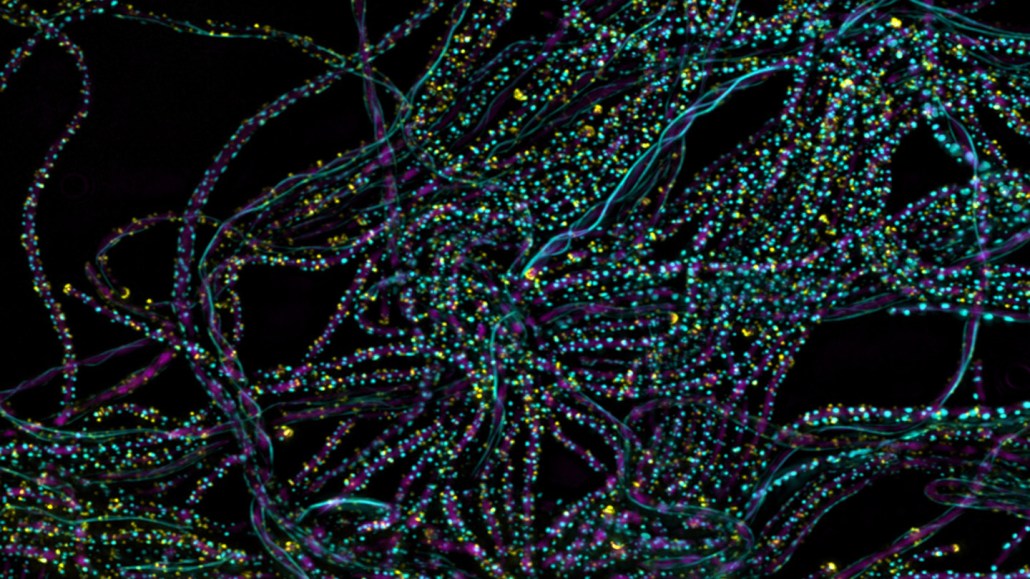
In photosynthetic bacteria like Rhodobacter sphaeroides (pictured), photosynthesis is kicked off by an individual particle of light, new laboratory experiments have confirmed.
Argonne National Laboratory (CC BY-NC-SA 2.0)
- More than 2 years ago
Read another version of this article at Science News Explores
For photosynthesis, one photon is all it takes.
Only a single particle of light is required to spark the first steps of the biological process that converts light into chemical energy, scientists report June 14 in Nature.
While scientists have long assumed that the reactions of photosynthesis begin upon the absorption of just one photon, that hadn’t yet been demonstrated, says physical chemist Graham Fleming, of the University of California, Berkeley. He and colleagues decided “we would just look to see was it really true that one photon was enough to start the whole thing off.”
The sunlight that falls on Earth’s surface seems brilliant to human eyes. But on small scales, that translates to a dribble of photons. Only a few tens of photons of the appropriate wavelengths of sunlight fall on a square nanometer per second, the scale of the tiny chlorophyll and bacteriochlorophyll molecules that are central to photosynthesis in plants and bacteria.
Many laboratory experiments on photosynthesis use lasers, much more powerful light sources, to kick off the reactions. Instead, Graham and colleagues used a source of light that produces just two photons at a time. One photon served as a herald, going off to a detector to let researchers know when two photons were released. The other photon went into a solution containing photon-absorbing structures from the photosynthetic bacterium Rhodobacter sphaeroides. These structures, called light-harvesting 2 complexes, or LH2, are made up of two rings of bacteriochlorophyll and other molecules.
In a normal photosynthesis reaction, LH2 absorbs a photon and passes its energy to another LH2 complex, and then another, like a game of hot potato. Eventually the energy reaches another type of ring, called the light-harvesting 1 complex, or LH1, which then passes it to the reaction center where the energy is finally converted into a form that the bacterium can use.
In the experiment, there was no LH1, so the LH2 instead emitted a photon of a different wavelength than the first, a sign that energy had been transferred from the first ring of LH2 to the second, a first step of photosynthesis. The researchers detected that second photon, and by comparing the detection times to those of the initial herald photons, confirmed that the LH2 needed to absorb only one photon to kick things off.
Plants and bacteria use different processes for photosynthesis, but the initial steps are similar enough that in plants, too, a single photon would set off the initial steps, Fleming says. However, in plants, multiple independently absorbed photons are needed in order to complete the reaction.
The role of single photons isn’t surprising, says biochemist Richard Cogdell of the University of Glasgow in Scotland. The important thing the researchers have done, he says, is to demonstrate the new technique. “By doing this you’re able to essentially interrogate what will be happening in nature,” he says.
Some scientists suspect that photosynthesis relies on quantum physics (SN: 2/3/10). While it’s not clear whether the new technique could resolve the role of quantum effects, it could help scientists disentangle natural effects from artifacts of using intense sources of light in studies of photosynthesis.
“You can really work out what’s happening in the early reactions in photosynthesis as it were outside,” says Cogdell, “[as if] you could shrink yourself down and watch these photons moving around.”






